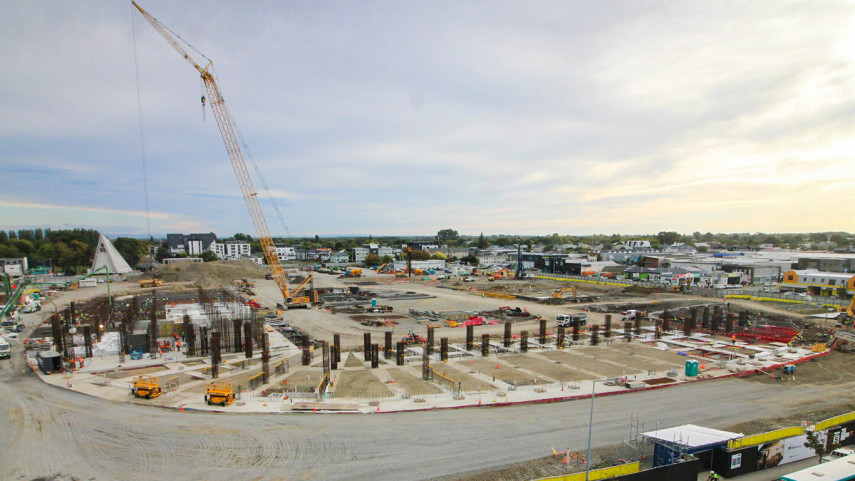Timelapse video of Te Kaha published as ground improvement work nears completion
Share this story
A new three-month timelapse construction video of Te Kaha, Canterbury’s Multi-Use Arena, has been published, bringing into sharp focus the extent of the work being carried out and the magnitude of the $683 million project.
Captured from the BESIX Watpac offices on Tuam St, the one-minute timelapse documents the ground improvement works being carried out across the site, before the substructure (foundations) and major concrete pours begin from the south-west corner.
Te Kaha Project Delivery Chief Executive David Kennedy says the ground improvement works – where rammed aggregate piers are pushed deep into the land – is on track to be completed ahead of schedule.
“There are currently two rigs finishing off the ground improvement works for Te Kaha’s northern and eastern stands, and we’re delighted with how well it’s gone and the progress the contractor, CLL, has made,” says Mr Kennedy.
“This important work began in August and is due to be completed at the end of the week.”

Drone image of Te Kaha work on 15 March.
Contractors began major concrete pours for Te Kaha’s substructure in early February, and have so far completed 15 major pours of between 300 and 1,000 cubic metres of concrete.
“These concrete pours mean 75 per cent of the southern stand and about half of the western stand substructures have been completed,” says Mr Kennedy.
“The concrete pours and substructure work will progress north and east across the site from the south-western corner. This part of the project is scheduled to be completed in the next couple of months, while work on the superstructure is expected to begin in the coming weeks and will follow the substructure work across the site as programmed.
“We’re pleased with progress and that the project remains in line with its programme and budget.”
An all-weather surface of AP65 and AP40 gravel is being added to high-traffic areas of the site to minimise mud over the winter months and manage any dust during drier periods.
Passers-by might have also noticed a large pile of dirt on the northern part of the site. Contractors excavated this dirt during the substructure work, but will use most of it for fill and landscaping as the project progresses.
More information on the project here.

